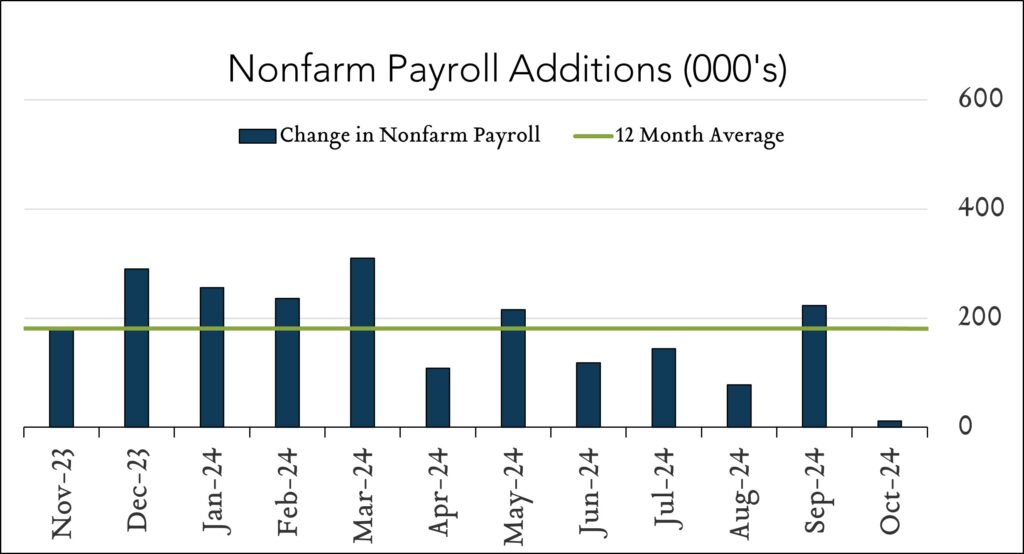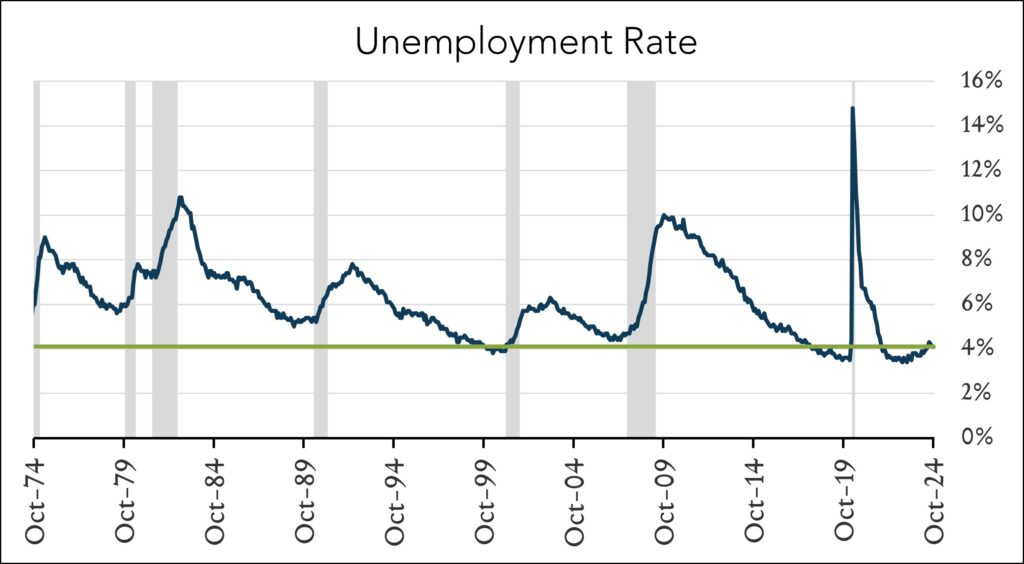November 1, 2024
October Jobs - Distorted by Strikes and Storms, But Soft Nonetheless
Strikes and storms contributed to the slowest pace of hiring since 2020; prior months revised lower; unemployment steady. The U.S. economy added just 12K jobs in October, advancing at the slowest pace since 2020, while the unemployment rate held steady at 4.1% in a report distorted by strike activity and two major hurricanes. The October jobs report is the last major data point on the health of the U.S. economy ahead of a week that includes a presidential election on Tuesday and a Fed rate decision on Wednesday. Other data released this week showed that the economy expanded at a healthy 2.7% pace in the third quarter driven by a yet-resilient consumer, while PCE inflation accelerated slightly in September. While the underlying labor market continues to cool, investors largely shrugged off today’s headline numbers.
· 12k jobs added in October; August and September revised lower. The U.S. labor market added just 12k jobs in October compared to expectations for +100K. August job gains were revised 81K lower to +78K from +159K originally reported and September job gains were revised 31K lower to +223K from +254K originally reported. Manufacturing employment decreased by 46K in October, reflecting a decline of 44K in transportation equipment manufacturing activity that was largely due to strike activity at Boeing. It is also likely that payroll estimates were affected by hurricanes Helene and Milton, though the BLS did not quantify the impact.
· 4.1% unemployment – unchanged from September. The U.S. unemployment rate was unchanged at 4.1%, in line with expectations. The labor force participation rate ticked down to 62.6% from 62.7% in September. Year-over-year, wage growth accelerated slightly to +4.0% from +3.9% in September. Month-over-month, wages increased 0.4% accelerating slightly from 0.3% (revised) in September.



